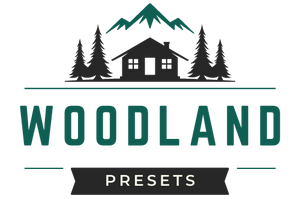Wildlife Photography Tips for Meaningful Images with Melanie Randall

Curious how to capture soft, emotional wildlife photos without needing the most expensive gear or years of experience? You’re in the right place.
We spoke with Hampshire-based wildlife photographer Melanie Randall (@melanie_randall_photography_), whose peaceful wildlife photos and bird photography stand out for their quiet detail and natural storytelling. From observing swans at dawn to catching owls mid-flight, her work blends patience, instinct, and a love for the outdoors.
In this behind-the-scenes Q&A, Melanie shares her wildlife photography tips, go-to gear and accessories, how she chooses her wildlife photography camera and lens setup, and the techniques that help her stay present and creative in the field.
Whether you're exploring bird photography for the first time or looking to refine your wildlife photography equipment and editing workflow, her story has something worth borrowing for your own process!

Can you tell us a little about your story, where you're from, and how your love for wildlife photography first began?
Hi, I’m Melanie, from Hampshire, and I have a passion for wildlife photography. It all started around four years ago when I began taking pictures of birds and wildlife on my phone during walks.
Later, I got a bridge camera with a zoom lens, and that’s when my love for photography really began to grow, along with my appreciation for capturing those special moments in nature.
I eventually moved on to a DSLR with a telescopic lens, where I spent time learning different settings, practicing regularly, and building confidence just by being out in nature.
I also completed Level 1 and 2 photography courses at a local college, which helped me understand the theory behind what I was already passionate about.
I now use a mirrorless camera that I absolutely love, and I’m still learning something new every day.

Your work has a really peaceful, almost storybook quality. How would you describe your photography style in your own words?
My photography is based on my observations when I’m out in nature, surrounded by wildlife in different environments. It’s a collection of moments I find personally endearing and beautiful, a way to watch animal behaviour and learn from the natural world around us.
I simply enjoy going out with my camera, taking everything in, and pausing to capture those magical moments that are always there in nature - you just have to look for them.

What draws you to the animals and birds you photograph most often, swans, owls, ducklings? Is there a personal connection to them?
I love photographing all kinds of wildlife - whether it’s at nature reserves I visit, countryside walks, local lakes, or during photography experience days.
I’m especially drawn to birds.
There’s something very special about capturing those tender moments and instinctive behaviours that reflect the heart of wildlife. I feel a personal connection through observing and photographing them - we can learn so much by quietly watching how they interact with their environment and each other.

A lot of your images feel very close and intimate, what’s your approach to building trust or capturing those softer, candid moments in the wild?
Many of my images are taken during walks or from hides. Standing back and observing is always the best approach. It’s vital to protect the wildlife, so staying at a safe distance and being quiet allows you to observe without disturbing them.
It’s all about respecting the animals and their environment. Patience plays a big part, too.

Do you have a favorite time of year to shoot? How does the changing light or environment influence the kind of photos you look for?
I enjoy photographing wildlife throughout the year - each season brings its own beautiful backdrop of colours and tones.
I especially love the vibrant tones of autumn with the changing leaves, while summer offers longer daylight hours. Spring is full of new life and blossoms, and winter brings magical early morning frosts and sometimes snow.
Each season also offers unique wildlife events, like nesting, fledging, the deer rut, and migration. The whole year is full of awe-inspiring moments just waiting to be captured.

How do you typically plan your photography outings? Do you go out with specific shots in mind or let the moment guide you?
I usually just take my camera and go for a walk, letting the moment guide me. I love the feeling of not knowing what I might capture - it adds to the magic and excitement of wildlife photography.
Sometimes, I’ll plan a trip to a specific place if I’m hoping to see a particular species, but of course, nothing is guaranteed, and that’s part of the thrill. I just love being outdoors with my camera and feel incredibly lucky to have such a wonderful hobby.

What’s one of your favorite photo memories, maybe a moment that surprised you or made the whole day worth it?
The first time I saw a kingfisher, I was so happy, it was pure magic and one of those moments I’ll never forget. I was mesmerised by its colours and speed.
The kingfisher will always be special to me, and every sighting feels just as magical as the first.
Another moment that stands out was seeing a barn owl in flight, silent, graceful, and completely captivating. Moments like that make the whole day worthwhile.

What gear are you currently using, and how does it help you achieve your look? Are you someone who travels light or carries everything “just in case”?
I use a Canon R6 with a Sigma 150-600mm telephoto lens, which allows me to capture fine details from a distance.
I’m becoming more confident with navigating my camera’s settings, but I’m still learning, and that’s part of the joy.
I always make sure I pack everything I need: plenty of SD cards, fully charged batteries, and all the essentials. I prefer to be prepared, just in case!

When it comes to editing, how do you keep the balance between enhancing an image and preserving its natural feel? Any go-to tools or methods?
I use Lightroom Classic to edit my images. I like a soft, natural light feel and enjoy the process of enhancing my images through subtle edits.
Everyone has their own editing style, and that’s part of what makes photography so exciting - it’s a creative process where we can each put our own stamp on the final image.
For me, editing is still very much an ongoing journey of learning.

Has your style or perspective changed since you started? What have you learned, not just technically, but creatively, along the way?
I’ve always just loved being out with my camera, and that still remains the most important part for me. I’ve learned that progress takes time and practice, and that’s absolutely fine.
Lately, I find myself paying more attention to composition, light, colours, framing, and the finer details. My style is still evolving, and that’s exciting.

If someone asked for one tip to capture more emotional or gentle wildlife images, what would you tell them?
Be patient, take your time, and be willing to return to the same spot again.
The more you observe, the more you learn - and when that special moment happens, it’s incredibly rewarding.
Enjoy the process and stay present in it.

And finally, where can people find more of your fabulous work or connect with you online?
You can find more of my work on Instagram and Facebook at @melanie_randall_photography_ where I share my wildlife and nature photography.

Bonus question: Anything you’d like to share about yourself or your work that we didn’t cover?
I’d be delighted for you to view my gallery - thank you so much for taking the time. I hope my images help others appreciate the beauty of the natural world as much as I do.

Thank you for reading! Melanie’s approach to bird and wildlife photography is a reminder that slowing down, staying curious, and noticing the quiet details can lead to some of the most moving images. With a reliable wildlife photography camera, a versatile lens, and a mindset rooted in patience and respect, she captures moments that feel both intimate and timeless.
Whether you're just beginning your journey into wildlife photography or looking for tips to refine your gear setup, field habits, or soft light editing style, Melanie’s work offers a thoughtful example of what’s possible with heart, practice, and a love for nature.
Big thank you to Melanie for sharing the process behind her beautiful wildlife photography. She’s been sharing her work with us since the start of the year, and it’s been a real joy to follow her journey and see her photography evolve!




Leave a comment